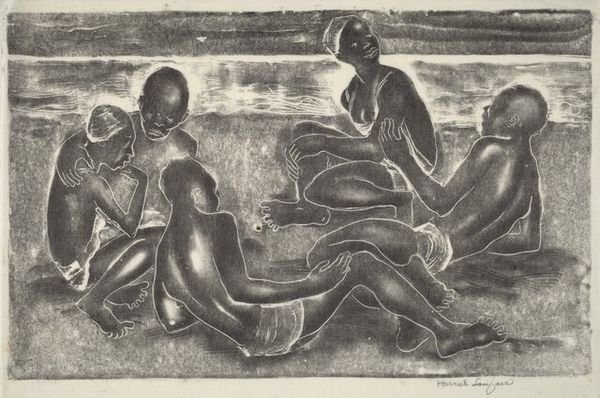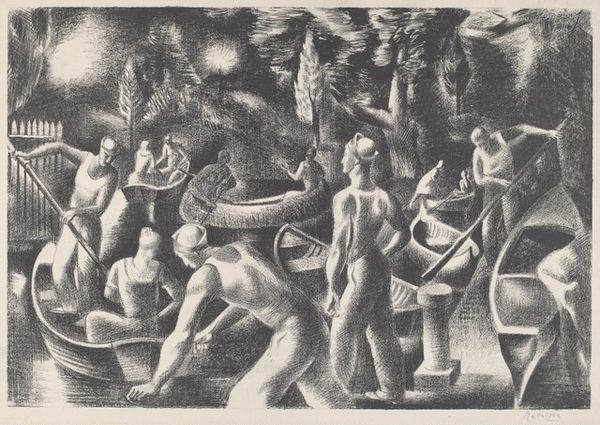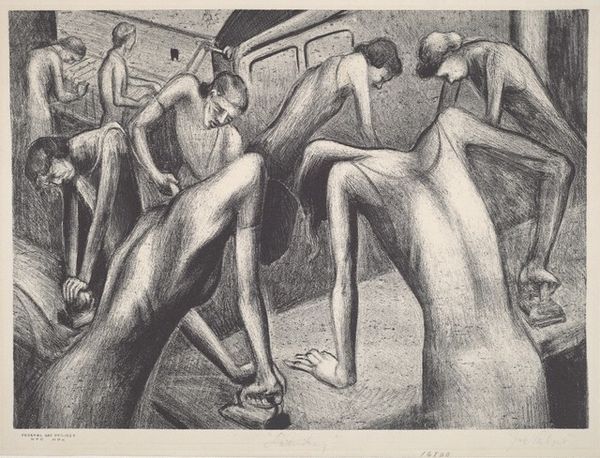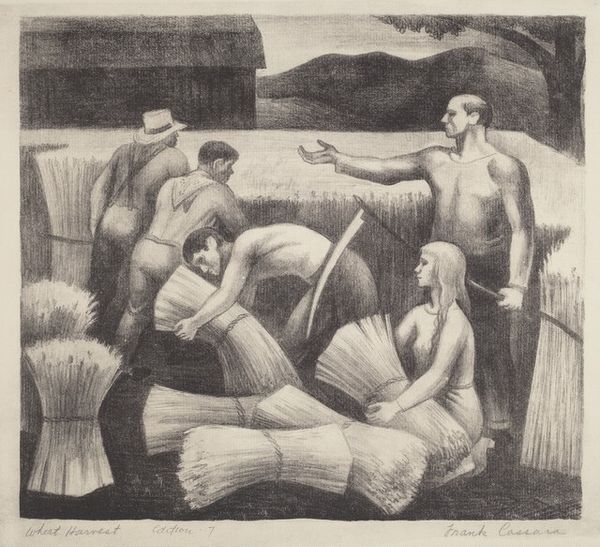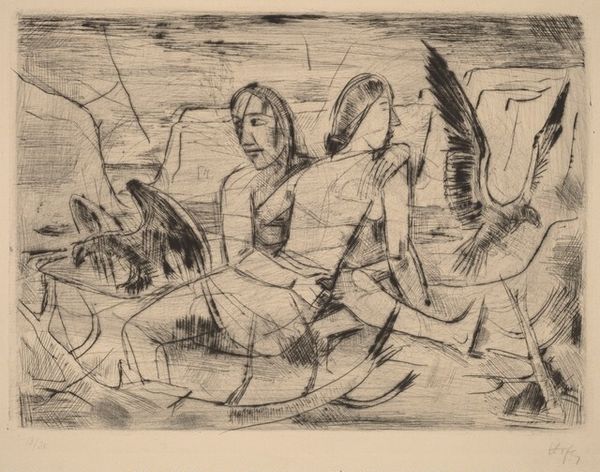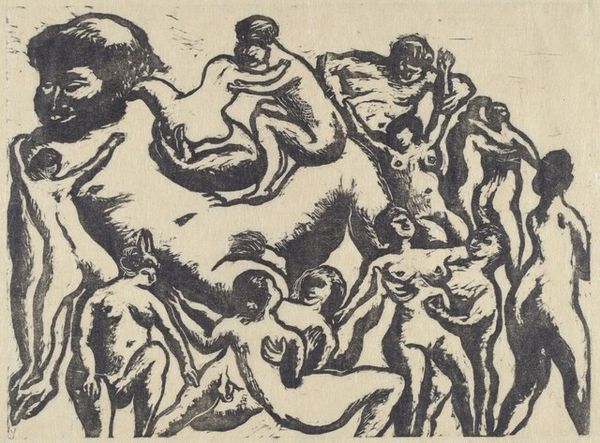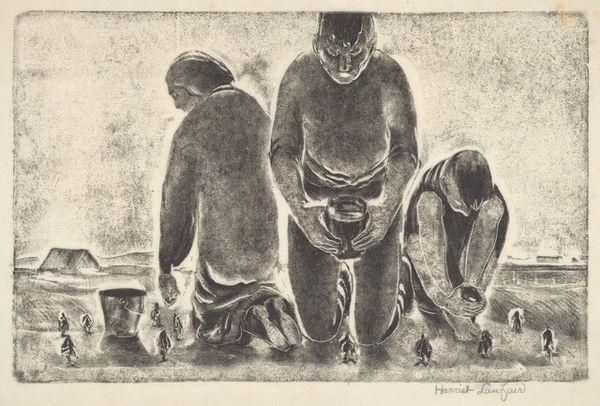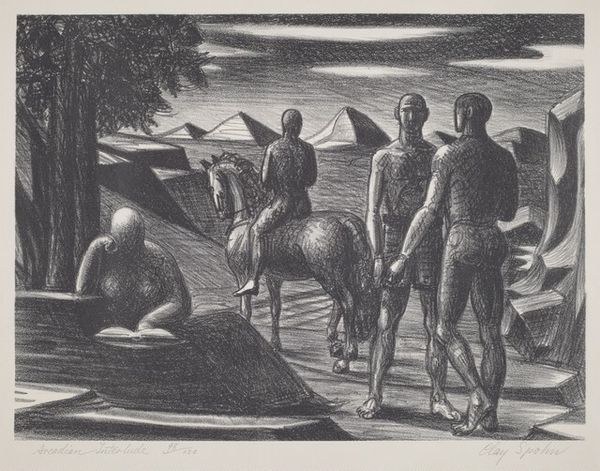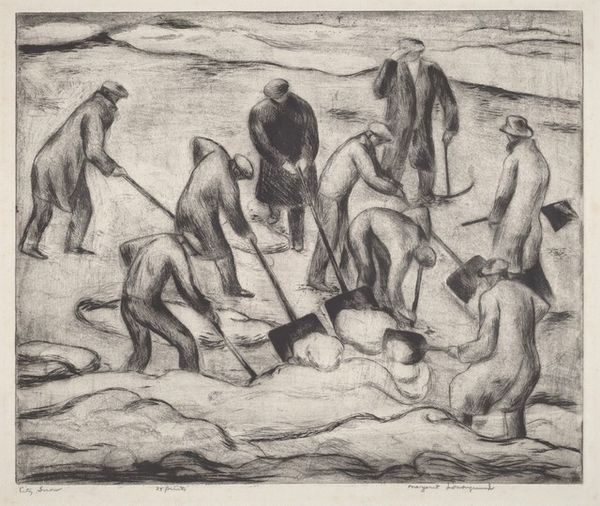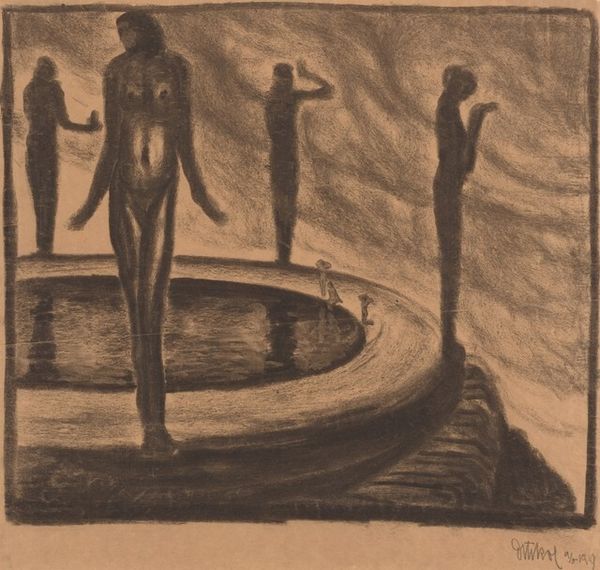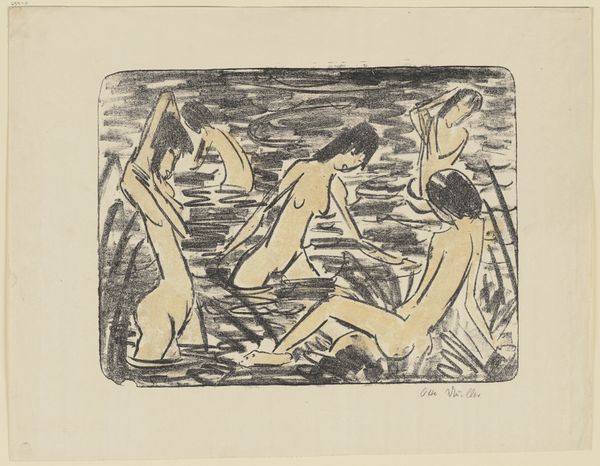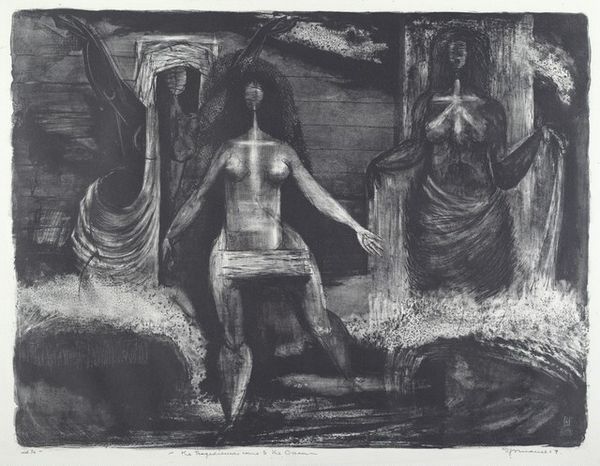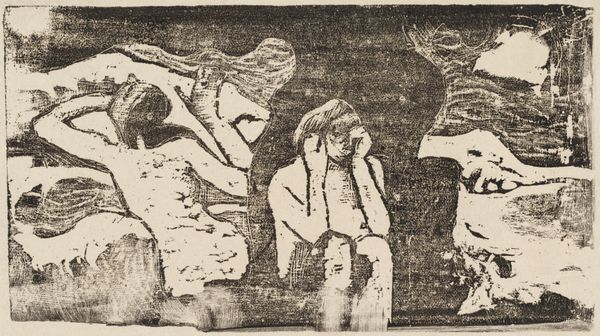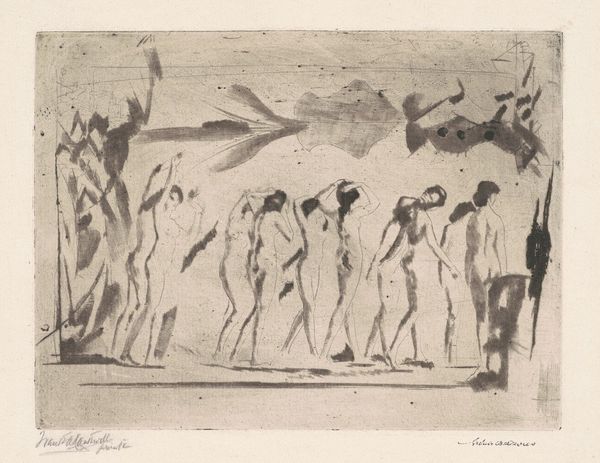
Dimensions: image: 205 x 325 mm sheet: 251 x 435 mm
Copyright: National Gallery of Art: CC0 1.0
Editor: So, this is Harriet Keese Lanfair’s "Untitled (At The Beach)," likely from around 1935. It appears to be a print, maybe an etching, depicting a group of figures. There's a casual, almost intimate feel to the gathering, but the monochrome and texture also give it a sense of distance. What catches your eye in this composition? Curator: The interaction of light and shadow is compelling. Notice how the artist uses chiaroscuro to model the figures, creating volume and depth within a limited tonal range. The textural variations achieved through the etching process are significant. Do you see how the density of lines alters the surface? Editor: I do, especially in the foreground versus the background, which appears much more loosely rendered. It almost feels unfinished, or perhaps intentionally ambiguous? Curator: Precisely. The ambiguity forces us to consider the materiality of the work itself, rather than simply reading it as a straightforward depiction. The surface becomes activated. What relationship, do you think, exists between the figures and the landscape they occupy? Editor: Well, the landscape almost seems to dissolve into the figures; they blend together, sharing the same visual space rather than existing separately. Curator: An astute observation. Consider then, how this collapsing of figure and ground affects our understanding of space and form within the composition. The work resists narrative, turning us instead towards its formal elements. Editor: I see it now. It’s less about the who and why and more about the how—how the lines, the textures, and the light create a sense of intimacy but also detachment. It's made me reconsider what's most important to notice first. Curator: Indeed, a close reading of the formal components reveals its complexities. It highlights the essence of form itself.
Comments
No comments
Be the first to comment and join the conversation on the ultimate creative platform.
